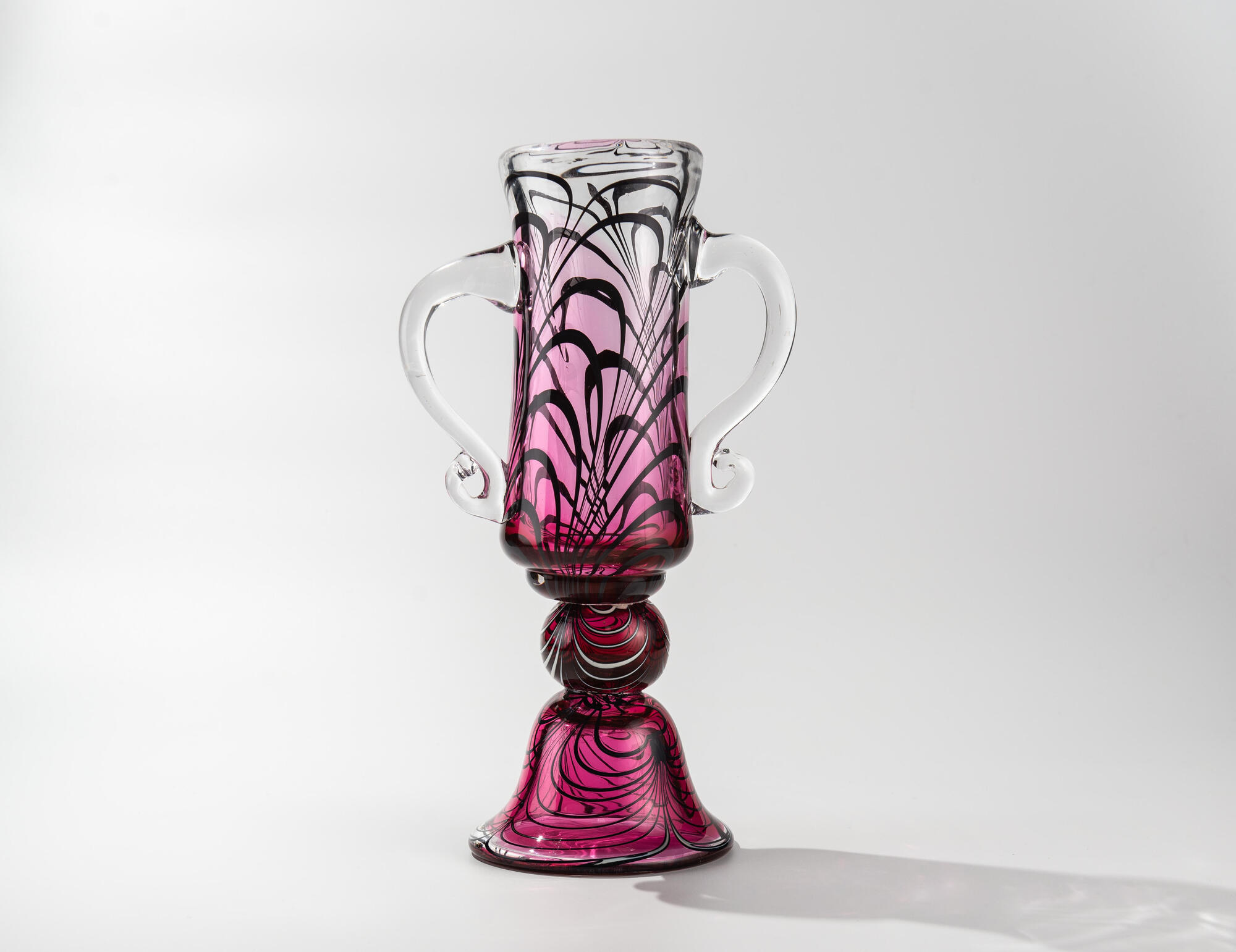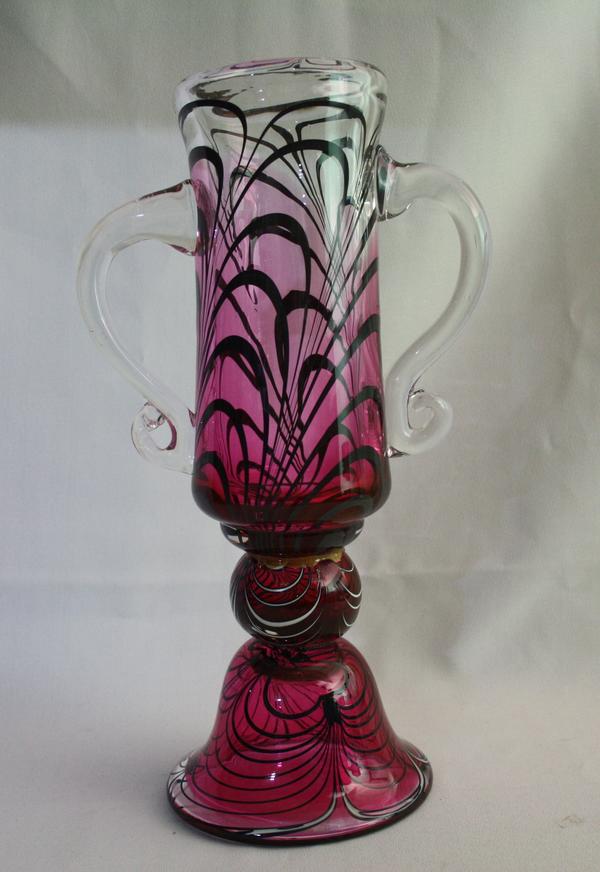This flower vase was created using the sophisticated production and decoration technique known as the “tangled thread”. This technique belongs to the free blowing method where the glass is decorated immediately at the glass melting furnace. The Russian term for this technique “gutnaya” most likely originated from the Latin word “gutta” meaning “a drop”. In this case, it is a drop of hot glass mass. The hot product of one color is wrapped with a thread of molten glass mass of another color. The temperature of the main gather and the thread is around 800 ºС and 1100 ºС respectively. Later, parts of the vase are glued together after cooling down.
This vase was created using glass mass of several types and colors, including crystal, pink glass, or so-called “gold ruby”, black, or “smoky-colored” glass, and white, or “milky” glass. The pink glass is obtained by adding gold compounds to the mixture for preparing glass. The “gold ruby” is one of the most expensive types of art glass. The black color is achieved by adding a mixture of manganese oxide and chromium oxide to the liquid glass mass. Milky glass is white glass that is partially or completely opaque. It resembles porcelain and is painted using fluorine or phosphorus compounds.
The vase was produced by the craftsman Vasily Kovalerov. He was a glass blower at the Dyatkovo Crystal Factory. Having graduated from the factory apprenticeship school, he worked at the factory’s Experimental Art Department. In his work, he used the complicated technique of “silent blowing” which involves taking the glass mass and blowing without rotating the glass in the mold. For creating highly artistic glassware, professional excellence, and exceptional skills, Vasily Kovalerov was awarded the title of master artist in 1966. The craftsman himself believed that one of his best works was the “Metamorphoses” decorative composition designed by the artist Viktor Shevchenko and made of zinc-sulfide glass. Along with the products of other craftsmen, Kovalerov’s works are exhibited in a special hall of the museum. Having dedicated many years of work to their factory, craftsmen contributed their experience, talent, and instinctive sense of glass in carrying out their tasks, to ensure the great success of Dyatkovo art glass.
This vase was created using glass mass of several types and colors, including crystal, pink glass, or so-called “gold ruby”, black, or “smoky-colored” glass, and white, or “milky” glass. The pink glass is obtained by adding gold compounds to the mixture for preparing glass. The “gold ruby” is one of the most expensive types of art glass. The black color is achieved by adding a mixture of manganese oxide and chromium oxide to the liquid glass mass. Milky glass is white glass that is partially or completely opaque. It resembles porcelain and is painted using fluorine or phosphorus compounds.
The vase was produced by the craftsman Vasily Kovalerov. He was a glass blower at the Dyatkovo Crystal Factory. Having graduated from the factory apprenticeship school, he worked at the factory’s Experimental Art Department. In his work, he used the complicated technique of “silent blowing” which involves taking the glass mass and blowing without rotating the glass in the mold. For creating highly artistic glassware, professional excellence, and exceptional skills, Vasily Kovalerov was awarded the title of master artist in 1966. The craftsman himself believed that one of his best works was the “Metamorphoses” decorative composition designed by the artist Viktor Shevchenko and made of zinc-sulfide glass. Along with the products of other craftsmen, Kovalerov’s works are exhibited in a special hall of the museum. Having dedicated many years of work to their factory, craftsmen contributed their experience, talent, and instinctive sense of glass in carrying out their tasks, to ensure the great success of Dyatkovo art glass.



